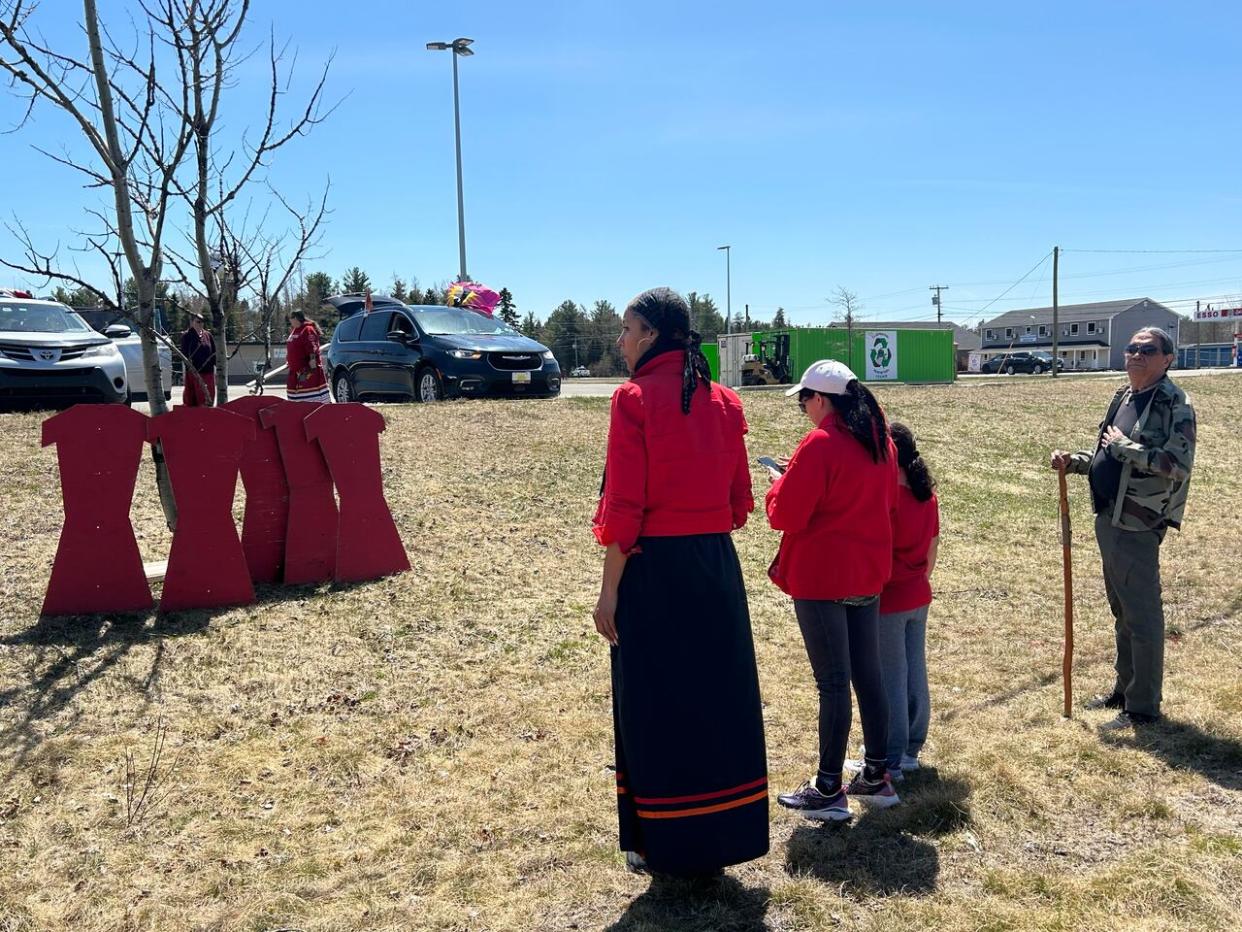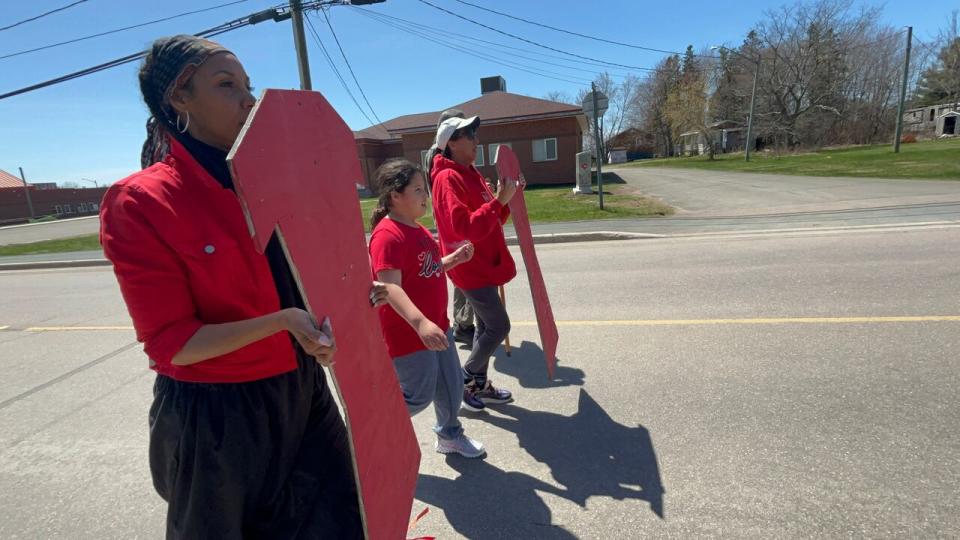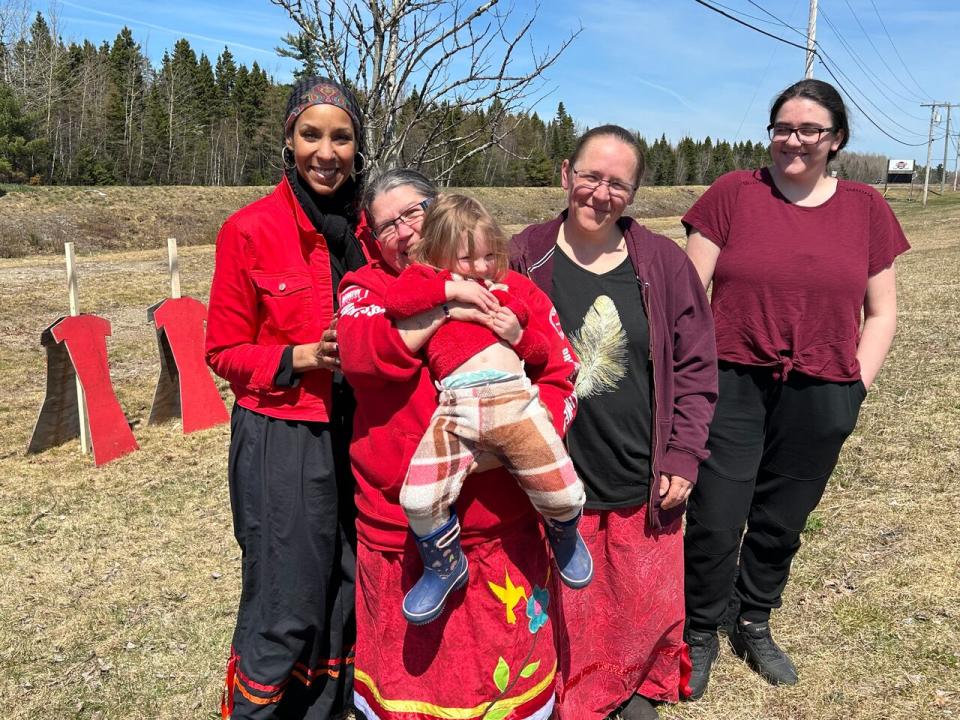Remembering missing and murdered Indigenous women beyond Red Dress Day

Lorraine Clair doesn't want anyone to forget why Red Dress Day exists, 14 years after the first event.
"I've had a red dress hanging in my window for years," said Clair, who organized Sunday's Red Dress walk in Elsipogtog First Nation. "Now it's even faded to pink almost.
"Little things like that help, but I think more of coming out and actually speaking about it."
That's what she aimed to do on Sunday.
Four people walked behind Clair, who led the way in her car through Elsipogtog holding wooden cutouts of red dresses. It was their effort to mark Red Dress Day, a day for raising awareness around Missing and Murdered Indigenous Women and Girls.
That small group wasn't alone. Many groups gathered to hold similar demonstrations across the province and country to mark the day.
According to Canada's Institute of Health Research, 63 per cent of Indigenous women in Canada have experienced physical or sexual assault in their lifetime.
"I think this day and every day, they should be talked about, they should be talked about in Parliament, they should be talked about everywhere," said Clair.
"There's too many missing and too many going missing."

A group of five from Elsipogtog First Nation went through the community holding wooden cutouts of red dresses in honour of Red Dress Day. (Rhythm Rathi/CBC)
Showing support
Stephanie De Lafontaine isn't a member of Elsipogtog First Nation, but wanted to show her support for the community on Sunday.
She helped set up the wooden red dresses along the highway so people will see the dresses as they drive by.
"I wish I could do more," said De Lafontaine.
She also brought her two daughters with her. She is trying to teach both to live with love and respect for others.
"If I can bring up my girls in following those ways, it's the best thing for me," said De Lafontaine.
Clair says including children who aren't Indigenous is an essential part going forward.
"That is a major step because of the fact that our history and our culture, our true history, has never been taught, even to our own children. But if we can start teaching it to non-native children, we can break racism right there," said Clair.
She says that happens by including children in events like what happened Sunday. Clair says these events are especially important for young Indigenous people, too.
"The more we do this, I think our young girls, our First Nation girls and boys, will be more aware of what they're doing and where they're going and who they're associating with," said Clair.

From left: Paryse Suddith, Lorraine Clair, Mili’tow De Lafontaine (child), Stephanie De Lafontaine and Erika De Lafontaine. (Rhythm Rathi/CBC)
Going forward
De Lafontaine says that even though it was a small group on Sunday, any impact at all would make it worth it.
"If there's only one person that drives by and those dresses touched their heart … making them ask questions [like] what are those, and why are they standing there, we would have done our job," said De Lafontaine.
It's been close to five years since the inquiry into missing and murdered Indigenous women and girls.
Clair says Red Dress Day is important because it reminds people of the ongoing issue. But it's something that should go beyond just May 5.
"With every event that happens, somewhere in the corner there should be a red dress to represent the ones who aren't there, the ones who didn't make it," said Clair.
"I just want the families to know that we haven't forgotten. That I haven't forgotten. And I'm going to do everything I can to bring awareness."


